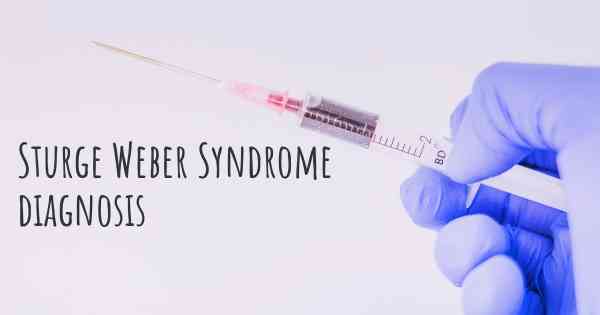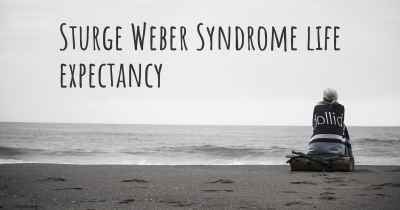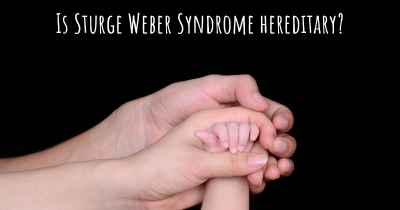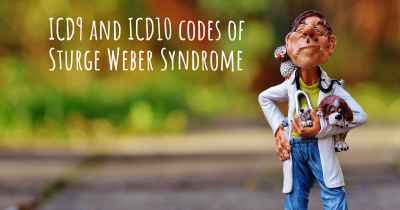How is Sturge Weber Syndrome diagnosed?
See how Sturge Weber Syndrome is diagnosed. Which specialists are essential to meet, what tests are needed and other useful information for the diagnosis of Sturge Weber Syndrome

Sturge Weber Syndrome (SWS) is a rare neurological disorder that is present at birth. It is characterized by a distinctive facial birthmark called a port-wine stain, abnormal blood vessels on the surface of the brain, and eye abnormalities. The severity of symptoms can vary widely among individuals with SWS, ranging from mild to severe.
Diagnosing Sturge Weber Syndrome
Diagnosing Sturge Weber Syndrome typically involves a combination of clinical evaluation, medical history review, and diagnostic tests. The process may be carried out by a team of healthcare professionals, including neurologists, dermatologists, ophthalmologists, and radiologists.
Clinical Evaluation:
The initial step in diagnosing Sturge Weber Syndrome is a thorough clinical evaluation. The healthcare provider will examine the patient's medical history, including any symptoms or developmental delays. They will also perform a physical examination, paying close attention to the presence of a port-wine stain on the face, which is a key characteristic of SWS.
Port-Wine Stain:
A port-wine stain is a flat, pink or reddish birthmark that is typically present at birth. It is caused by an overabundance of capillaries (small blood vessels) in the affected area. In the case of SWS, the port-wine stain is usually located on one side of the face and may extend to the forehead, scalp, or neck. The presence of a port-wine stain is a strong indicator for further investigation of SWS.
Neurological Examination:
A comprehensive neurological examination is crucial in diagnosing Sturge Weber Syndrome. The healthcare provider will assess the patient's motor skills, cognitive abilities, and overall neurological function. They will look for signs of neurological abnormalities, such as seizures, muscle weakness, or developmental delays.
Diagnostic Tests:
Several diagnostic tests may be used to confirm the diagnosis of Sturge Weber Syndrome and evaluate its extent. These tests include:
- Magnetic Resonance Imaging (MRI): An MRI scan of the brain is commonly performed to visualize the extent of abnormal blood vessels and any associated brain abnormalities. It provides detailed images that help in determining the severity of the condition.
- Computed Tomography (CT) Scan: A CT scan may be used to assess the structure of the brain and detect any calcifications or other abnormalities.
- Electroencephalogram (EEG): An EEG records the electrical activity of the brain and can help identify abnormal brain wave patterns associated with seizures.
- Ophthalmological Examination: An examination by an ophthalmologist is essential to evaluate the eye abnormalities commonly associated with SWS. This may include assessing intraocular pressure, visual acuity, and the presence of glaucoma or other eye conditions.
Genetic Testing:
In some cases, genetic testing may be recommended to identify specific genetic mutations associated with Sturge Weber Syndrome. However, it is important to note that SWS is not typically caused by inherited genetic mutations but rather occurs sporadically.
Early Diagnosis and Intervention:
Early diagnosis of Sturge Weber Syndrome is crucial for implementing appropriate interventions and management strategies. Prompt identification allows for early initiation of treatments such as anticonvulsant medications to control seizures, eye drops to manage glaucoma, and other supportive therapies.
Conclusion:
Diagnosing Sturge Weber Syndrome involves a comprehensive evaluation of clinical signs, medical history, and diagnostic tests. The presence of a port-wine stain, neurological abnormalities, and eye abnormalities are key indicators for further investigation. Diagnostic tests such as MRI, CT scan, EEG, and ophthalmological examination help confirm the diagnosis and assess the extent of the condition. Early diagnosis is crucial for timely intervention and management of symptoms associated with Sturge Weber Syndrome.
Posted Apr 26, 2017 by Gill 1150
Posted Apr 26, 2017 by Paul 1726
Posted Mar 9, 2020 by Courtney 700
Posted Jul 10, 2021 by Stacey 700








